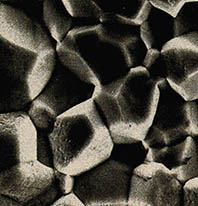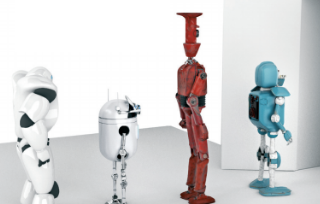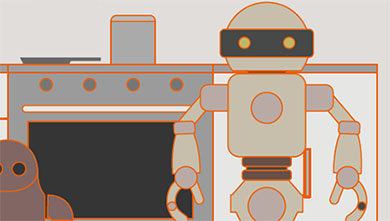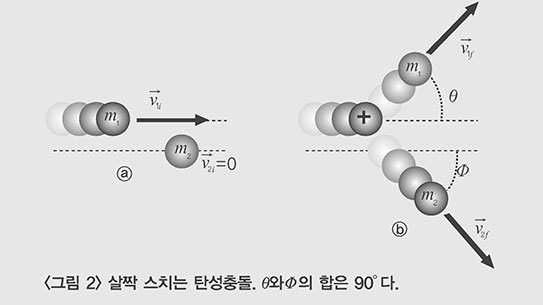지금까지 거의 반세기 동안, 천문학자들은 행성들이 보편적이며, 대부분의 또는 모든 항성들에 수반된다고 믿어왔다. 이것은 특히 우리의 태양처럼 주위에 반성(伴星)들을 가지고 있지 않는 단일 항성들의 경우에도 그대로 적용되는 것일 게다. 이제 천문학자들은 결국 이런 신념이 올바른 것일 것이라는 이제까지의 가장 신뢰할 만한 증거를 얻게 되었다.
별이 형성되는 방식에 대한 현재의 우리 관념은, 별이 천천히 응축되며, 점점 빨라지면서 회전하는 거대한 먼지 구름을 포함하고 있다. 그중심 부분은 항성이 되지만 그것을 둘러싸고 있는 보다 희박한 물질은 궁극적으로 행성들을 만들어 낸다.
사실, 이와 같은 응축은 항성들 주위에 행성들을 만들어 낼 수 밖에 없다 ; 우리 자신의 태양계가 한 실례이다. 문제는 이것이 우리가 알고 있는 유일한 실례라는 것이다.
또한 항성들을 회전하는 행성들이 존재한다 할지라도, 우리는 명백히 보통의 '본다'는 의미로서는 그것들을 볼 수가 없다. 행성은 그 자체의 빛을 발산하지 않으며, 그것이 회전하고 있는 근처 항성으로부터 반사된 빛에 의해 빛난다. 따라서 그것은 항성보다 훨씬 더 희미하며 그것이 방출하는 그 적은 빛마저도 근처 항성의 광채 속에서 결국은 소멸되어 버린다.
그러나 우리는 행성이 있는가를 알기 위해 그것을 실제로 볼 필요는 없다.
행성들이 없는 항성(또는 반성들)은 하늘을 천천히, 완벽한 직선 경로로 미끌어져 내려가곤 한다. 반면에 만일 행성이 수반하고 있다면, 그 행성과 항성은 공통된 중력 중심 주위를 회전하게 된다. 행성은 보다 작고 중력이 적기 때문에 대부분의 회전을 수행하지만, 항성 또한 작은 진동 속에서 회전하게 된다. 이렇게 되었을 때, 항성은 아주 조금 물결치는 경로를 따라 하늘을 가로지르는 경로를 쫓아가게 된다. (멀리서 보면, 우리의 태앙도 주로 거대한 행성인 목성의 인력때문에 진동하는 경로를 나타낼 것이다.)
그 진동은 만일 항성이 작고 행성이 크다면 가장 두드러질 것이다. 1940년대 부터 1960년대에 이르기까지, 몇몇 항성들에 대해 이와 같은 진동들이 보고 되었는데 특히 5.9광년 떨어진 바나드의 항성이라 불리는 조그만 별의 경우가 그러했다.
그러나 그 보고들은 검증되지 못했다. 다른 천문학자들이 보고된 진동들을 관측하지 못했으며, 그 보고는 망원경 사용의 잘못으로부터 발생했다는 것이 최종적으로 결정되었다. 희망은 사라졌다.
그러나 지난 20년간 관측기계들이 개량되었으며, 1988년 중반엔 하버드의 데이빗 W. 래덤과 브리티시 콜러비아(캐나다의 주)의 빅토리아 대학의 부루스 캠펠이라는 두명의 천문학자들이 진동하는 항성들의 관측을 각각 보고했다.
래덤의 발견은 조금은 우연이었다. 그는 우리로부터 대략 90광년 떨어진 HD 114762라고 알려진 태양과 비슷한 항성을 단지 그의 망원경을 시험하기 위해 연구하고 있었는데 그는 진동을 발견한 것이다. 그는 또 다른 설익은 선언을 하길 원치 않았기 때문에, 7년간이나 그항성을 주시했고, 그동안(진동으로 판단하건대) 한 행성이 84일에 해당되는 공전주기를 가지고 그 별을 30번 회전했다.
반면에 캠펠은 항성들이 우리에게 접근하는 (또는 우리에게서 멀어지는) 방식을 연구했다. 행성이 없다면 그 항성은 접근하면서 진동할 것이며 이후 멀어지고 다시 접근하는 것을 반복할 것이다.
7년에 걸쳐 캠펠이 연구한 전부 1백광년이내에 있는 18개의 항성들 가운데 9개가 진동을 나타냈으나, 만일 이것이 행성들의 존재의 결과라면 이 행성들은 한바퀴 회전을 마치기 위해 7년 이상의 시간이 걸릴만큼 회전하는 항성들로부터 충분히 멀리 떨어져 있어야 했다.
진동이 두드러지게 눈에 띄려면 행성들은 매우 커야 하며, 아마 목성보다도 훨씬 더 커야 할것이다. 이점은 그것들이 진실로 행성인지, 또는 매우 흐릿한 반성(伴星)인지를 불확실하게 만든다. 그리고 물론, 만일 그것들이 행성이라 할지라도, 목성만큼 거대한 행성들은 대부분 뜨거운 수소로 만들어져 있어야 하며, 우리 자신을 닮은 생명체에게는 전적으로 부적합할 것이다.
그럼에도 불구하고, 이 결과들이 보여준다고 여겨지는 것은 다음과 같다. 즉 적어도 항성들 가운데 반 또는 그 이상이 분명히 항성으로는 볼 수 없는 어떤 종류의 반성을 가지고 있다. 그것들은 목성 유형의 행성일 수도 있다. 그러나 만약 목성같은 행성이 있다면 항성을 도는 다른 행성이 있다는 것이다. 이 행성은 너무 작고 가벼워 항성에게 감지될 만한 진동의 영향을 끼칠 수 없기 때문에 찾아낼 수 없는 것이다.
달리 말하면 이러한 보고 때문에 학자들은 우리 은하에는(그리고 다른 은하들에도) 수많은 지구같은 행성들이 있다는 것을 믿을 준비가 되었다. 이는 중요하다. 왜냐하면 지구와 비슷한 행성들이 더 많으면 많을수록, 적어도 그것들중 몇몇이 생명체에 적합한 조건을 가지며 그것들에 생명체가 발현할 가능성이 커지기 때문이다.
이 뉴스 덕택에, 생명체가 우주의 보통있는 현상일지도 모른다고 생각하는 천문학자들은(나자신도 그러하지만) 이제 그들의 근거를 조금 더 확실한 것이라고 느낄 수 있다. 그리고 만일 생명체가 흔한 것이라면, 매우 우연히 지능적인 생명체가 출현하고 기술 문명을 만들어낼지 모른다. 따라서 우리는 홀로가 아닐 수도 있다. 아마도!
For nearly half a century now, astromoners have been persuaded that planets must be common, and must accompany most, or all, stars. This would be especially true of single stars, like our sun, that don't have nearby companion stars. Now the astronomers finally have the most reliable evidence yet that this belief may be correct.
The present conception of the manner in which stars are formed involves a large dust cloud that slowly condenses, turning as it does so faster and faster. The central part becomes a star, but the thinner material surrounding it eventually produces planets.
In fact, such condensation can't help but produce planets near stars; our own solar system is an example of this. The trouble is that it's the only example we know.
If there are planets circling other stars, we certainly can't "see" them in the ordinary sense of the word. A planet doesn't shine with light of its own but only by the light reflectde from the nearb star it cirdes. It is therefore much dimmer than a star, and what little light it can give off is utterly lost in the glare of that nearby star.
But we needn't actually see a planet to know it is there.
A star without planets (or companion stars) tends to creep across our sky in a slow, perfectly straight path. If, however, a planet accompanies it, the planet and the star turn about a common center of gravity. The planet, being smaller, with less gravity, does most of the turning, but the star alos turns in a small wobble. When this happens, the star follows a path across the sky in a path that has a very slight wave to it. (Viewed from a distance, our own sun would show a wobbly path, thanks chiefly to the pull of the large planet Jupiter.)
The wobble is most noticeable if the star is small and the planet is large. From the 1940s to the 1960s such wobbles were reported for some stars, notably a small one called Barnard's Star, which is only 5.9 light years away.
The reports could not be confirmed, however, Other astronomers could not measure the reported wobble, and it was finally decided that the report arose from errors in the use of the telescope. Hope faded.
In the last couple of decades, however, instruments have improved and, in mid-1988, two astronomers, David W. Latham of Harvard and Bruce Campbell of the University of Victoria in British Columbia have each reported observing stars that wobbled.
Latham's discovery was more or less accidental. He was studying a sun-like star known as HD 114762, about 90 light-years from us, simply to test his telescope, and he found a wobble. Not wishing to make another premature announcement, he kept an eye on the star for seven years, during which time (judging from the wobble) a planet circled it 30 times, with a period of revolution equal to 84 days.
Campbell, on the other hand, studied the manner in which stars approached (or receded from)us. Without a planet, the star might wobble as it approached, then receded, then approached, in alternation.
Out of 18 stars studied by Campbell over a seven-year period, all within 100 light-Years of us, nine showed a wobble, but if this was the result of the existence of planets, those planets were far enough away from the stars they were circling that they took longer than seven years to complete a revolution, Because an entire wobble was not observed, the results were somewhat less certain than Latham's.
In order for the wobble to be noticeable, the planets have to be large, probably considerably larger than jupiter. That makeks it uncertain whether they are truly planets or merely very dim companion stars. And, of course, even if they are planets-planets that are as large as Jupiter are bound to be made up mostly of hot hydrogen and would be completely unsuitable for life resembling our own.
Still, what these results seem to show is this: At least half the stars, and maybe more, have some sort of companions that are not too obviously stars. They may be Jupiter-type planets, but it seems likely that, if a Jupiter-type planet exists, there are other planets also circling the star that can't be detected simply because they are too small and light to force a detectable wobble on the star.
In other words, with these reports, astronomers are bound to be a little readier to believe that there are numerous Earth-like planets in the galaxy (and in other galaxies as well.) This is important, because the more Earth-like planets there are, the greater the chance that at least some of them will have conditions suitable for life and that on them life will develop.
Thanks to this news, those astronomers who (like myself) suspect that life may be a common pehnomenon in the universe can now feel just a little surer of their ground. And if life is common, than, very occasionally, intelligent life-forms may develop and produce technolgical civilizations, so that we are not alone. Maybe
(c) 1988, Los Angeles Times Syndicate
이 기사의 내용이 궁금하신가요?
기사 전문을 보시려면500(500원)이 필요합니다.
1988년 11월 과학동아 정보
🎓️ 진로 추천
- 천문학
- 물리학
- 지구과학

















